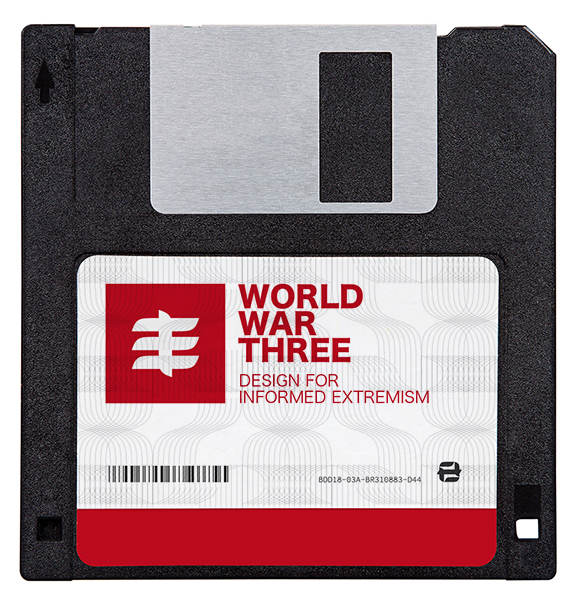A hundred years ago we were witness to the end of the world’s first large-scale conflict. The reason behind that end was simple: there was no unity to the havoc. Now, in a new millennium, armed with more than just arms, the World War Federation seeks to enforce corrective measures. And it starts much the same way as conflict does -- indoctrination.
Plato believed that reality is divided into two regions. One of these is the region of senses, about which we can only have approximate or incomplete knowledge, garnered through our five approximate or incomplete senses. In this world of senses, things come to be and pass away; nothing is permanent. The other region is the world of ideas, about which we can have true knowledge, using our reason. This world of ideas can neither be perceived nor is bound by the senses, but the ideas are eternal. The insight we derive is that once you conquer a man’s reason, you conquer his ideas. This is what our communication aims for.
Lessons from the past
01. NO WAR IS FINAL.
The only way to truly escape is to welcome the next one like a friend - arms wide open, ready to be embraced.
02. THERE’S ALWAYS PRETEXT.
No murder on its own can be a catalyst for war. Hungary, Austria and Serbia were already bearing arms by the time Archduke Ferdinand touched the ground.
03. NEVER UNDERESTIMATE LONGEVITY.
Disease and starvation hold equal credit for the impact that World War Two had. Unlike conflict and trauma, they did not emanate from violence, but longevity.
04. FOR CHAOS, CAPITALIZE HORROR.
100,000 dead by a single bomb? Their murder holds the potential to scare another 100,000 to death by the 100,000 stories you write about them.
05. FOR SUSTENANCE, NORMALIZE VIOLENCE.
People trust emotions blindly. In no time, they’ll be just as blind towards everything they’ve labeled as evil.
06. LEAVE ROOM FOR GRAVES.
WW1 - 39 million casualties.
WW2 - 73 million casualties.
Imagine the collective power of all the graves lined together.
07. YOUR BRAVEST SOLDIERS ARE YOUR CIVILIANS.
Hired hands are necessarily the most belligerent. The civilian whose child died of starvation, certainly so.
08. WAR NEVER MAKES AN ENTRANCE.
After Napoleon, the Europeans thrived economically and technologically. Their progress, however, could not prevent them from falling into the worst war in history.
09. NO ONE COUNTRY IS YOUR ENEMY.
Your stand against those who stand against you.
10. FEAR IS CLEVER.
The most insightful of ideas have come out of the most dreadful of situations.
11. PROPAGANDA WINS WARS.
How do you win wars? Communication.
12. ART IS WORTH A THOUSAND LIVES.
Beautiful wars don’t ask for attention,
but they do help create great art pieces.
13. VICTORY IS NEVER OBSOLETE.
Americans must’ve thought that they won the war against Iraq in May 2003, but they almost lost it by November 2006, and then clearly won it by January 2009, only to be followed by a pull out in 2011.
Conflict demands sacrifice, and sacrifice needs belief. This is a set of guidelines compiled by the World War Federation, for use by our employees, partners, and stakeholders, so that all may be aligned to the same objective. Some -- but not all -- of the information contained herein will also pertain to public usage. Within lie our systems and strategies, process and protocol, and a comprehensive method to minimise confusion and enhance communication.
War is an eternal reality; axiomatic and all-reaching. It is this truth that fuels our concept. The three strokes stand for time itself -- each stroke representing the past, the present, and the future. The past is where we draw inspiration from, and a future-ready war is what we hope to create -- all while being firmly entrenched in the present. This union, then, presents to us the symbol of War -- at once the ruling Crown and the hunting Claw. Thus is born a mark that’s apt for a brand that’s truly for the people.
The simplicity of the structure means that it is easily adaptable to both static and dynamic presentations. The individual strokes can also act as section markers, helping instill the identity deeper, in subtle, insidious ways.
Blood. It’s what keeps us going.
The visceral nature of the lifeblood red -- the currency of order -- is our mainstay colour. But, true to our word, we use it only when absolutely necessary. This translates to our design principles as well. Soot and White Supreme stay our main shades, and Blood Red appears only as highlights or as distinct accents.






































